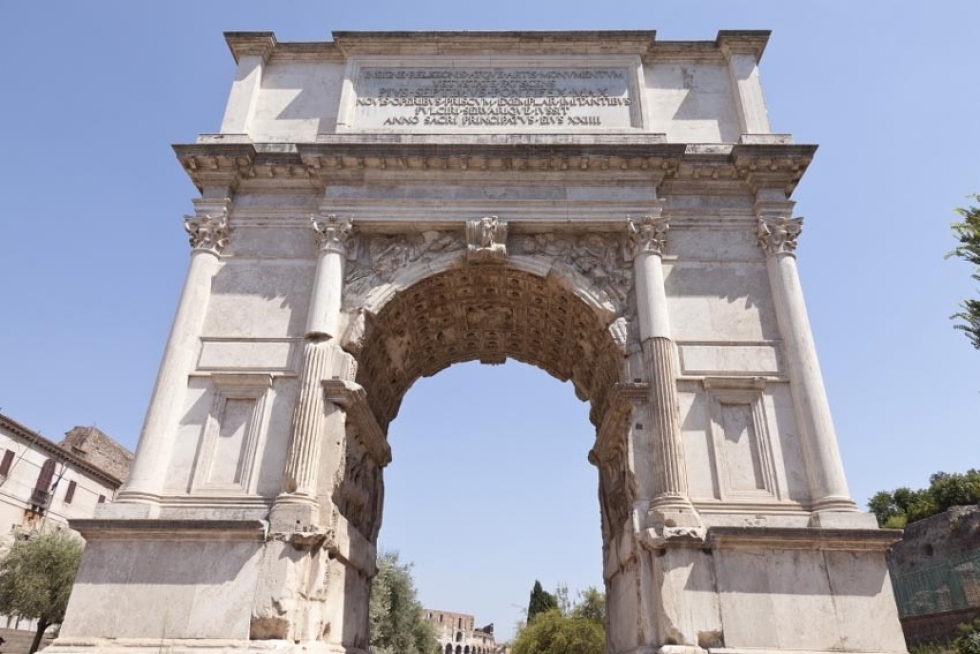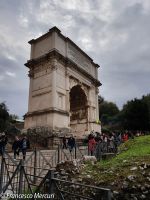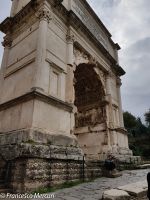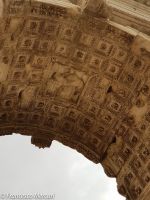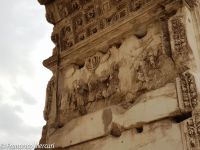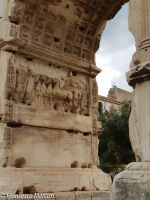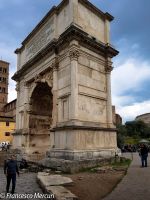The ceremony consisted in an actual parade with iron and firm rules, which started from an area of the city called Campo Marzio and ended – after going through the Via Sacra (Sacred Road) – on the Capitoline Hill in front of the Temple of Jupiter.Here the winner put down the laurel wreath and made the ritual sacrifices. Often - to make his achievements last forever - an arch was dedicated to the general: a “Triumphal Arch” indeed. Today in Rome 3 triumphal arches still stand, but at the end of the Imperial Age there must have been at least 20.The older existing arch is the Arch of Titus located in the Roman Forum. It was erected by will of the senate in 90 A.C. to honor Emperor Titus’ military feat (the son of Vespasian who died in 81 A.C.This monument celebrate the success of Titus’ military campaign in Judea, ended with the sack of Jerusalem and the destruction - in 70 A.D. - of the Salomon Temple (also known as the First Temple). Only the Western Wall of the temple was left standing, known today as the Wailing Wall.The Arch of Titus is 15,40 meters high, 13,50 meters long and 5 meters large. It is covered in marble (of two different types: Pentelic and Lunense), the nucleus of the arch is in Roman concrete and consists of an arches (“fornice”) and four half-column for each long side. The structure is compact and powerful and has two elements that make it unique: the Composite capitals (both Ionic and Corinthian order) and the half-columns laying on a small pedestal called “plinth”. The Arch transmits simplicity and harmony. The low reliefs set inside the “fornice” are enchanting and very well preserved, and they depict the highlights of Titus’ triumph ceremony. One of these panels clearly shows a seven-lamp lampstand (one of the sacred items robbed from the Salomon Temple), while on the vault of the arches we can see the figure of the Emperor carried by an eagle: sign of his deification. It is important to stress the fact that still nowadays many Jewish do not walk underneath this arch, considering the destruction of Jerusalem by Titus as the starting point of Jews diaspora.During the Middle Ages the monument was incorporated in the fortress of the Frangipani family. That’s probably the main reason the Arch wasn’t destroyed throughout the centuries. The very first works of restoration only began in the XVI century and continued – in a more accurate way – at the beginning of the XIX and XX century. Moreover on the attic of the triumphal arch we can still find a written dedication from the senate to Emperor Titus – prematurely perished – and admire a very important part of its foundations. In fact, the foundations of the structure emerged during the restorations of the pavement in 1901-02. To better comprehend the fame that the Arch of Titus kept throughout the centuries after the Fall of the Western Roman Empire, we can consider the fact that Napoleon took it as the model for the building of the famous “Arc de Triomphe” in Paris. The Arch of Titus is therefore an example of glory and greatness.
Giuseppe Rosselli




